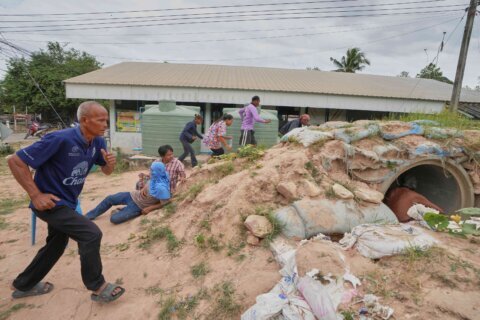CHEVY CHASE, Md. – A shrimp-like creature taking up residence in Rock Creek Park is giving proposed plans for Maryland’s Purple Line light-rail a run for its money.
Current plans for the Purple Line include trains crossing at Rock Creek Park near Maryland Route 410. But the recent discovery of the Hay’s Spring amphipod, a federally-protected endangered species, could delay plans.
The colorless, shrimp-like species was found in a spring downstream of where the Purple Line trains would cross. This is believed to be the species’ only location in the world, and the crustacean signifies good water quality, according to the U.S. Fish and Wildlife Service.
Maryland transit officials say state and federal environmental officials have not mentioned the presence of any endangered species along the proposed route, even after the completion of an environmental impact study, according to The Washington Post.
Local residents and environmentalists are concerned about the Purple Line’s impact on the rare species that measures about a half of an inch long.
“You’re talking about the existence of a species that’s unique on this planet,” John Fitzgerald, a Chevy Chase resident and attorney tells WTOP.
Fitzgerald wants to see more work done to assess the impact on that particular species and its environment, as a result of the Purple Line. He says it is important to make sure that all laws are followed in this process.
“If they don’t do the steps properly, we will need to sue to make sure that they are forced to do them,” says Fitzgerald.
He says unless quick action is seen on this, he and other environmental groups plan to file an intent to sue, followed by a lawsuit against the Maryland Transit Administration.
However, not everyone agrees with Fitzgerald’s stance on the Hay’s Spring amphipod.
“I’m a little skeptical that it even exists in the Purple Line impact area, at least in lower Montgomery County,” says Wayne Phyillaier of Purple Line NOW, a coalition of business, labor, environment, neighborhood and civic organizations that support development on the Purple Line.
Phyillaier says there was an extensive study done by the Department of Natural Resources in the late







